Koblenz is mainly known for its iconic landmark named Deutsches Eck (meaning “German Corner”): it’s an observation platform in the shape of a ship’s bow overlooking the confluence of the Mosel and the Rhine Rivers.
This historic city offers plenty of monuments and museums, a picturesque old town, and a scenic location at the heart of the Rhine River Valley, which was included in the UNESCO World Heritage List in 2002.
Wine lovers will surely enjoy its many wineries and the chance to visit some of the most renowned vineyards in Germany, while outdoor enthusiasts and families will be able to enjoy nature, bike, and trekking trails not far from the city center.
Koblenz is the ultimate destination to embark on a Rhine River cruise, and you shall definitely save at least one day to enjoy the river banks and explore the lovely villages and castles nearby.
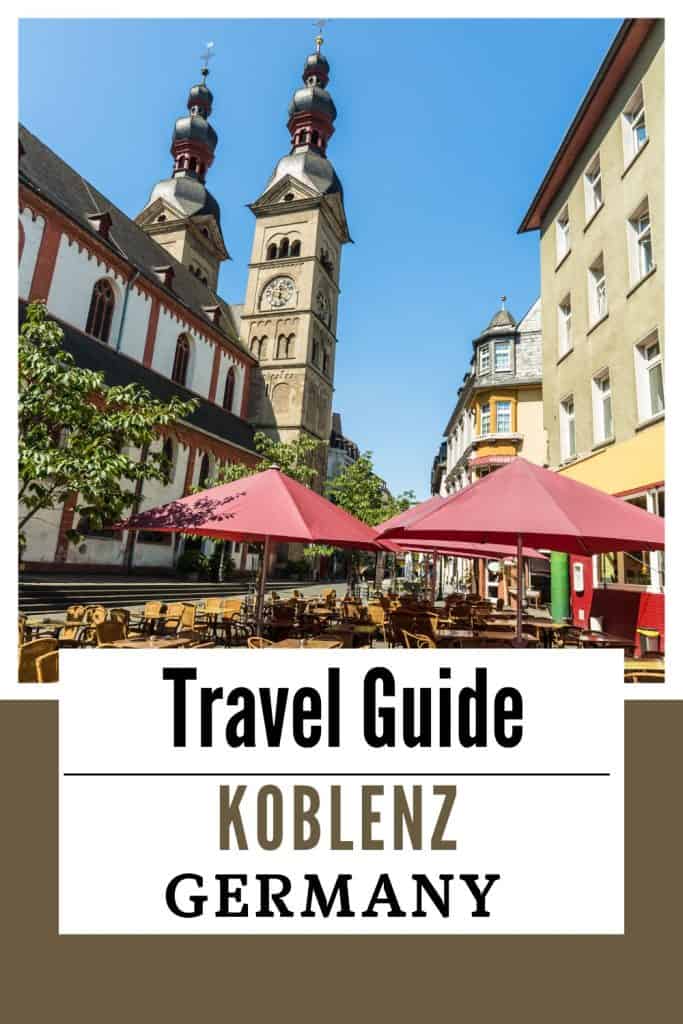
Disclaimer: This post contains affiliate links. This means I will receive a small commission if you click on certain links and subsequently purchase a product.
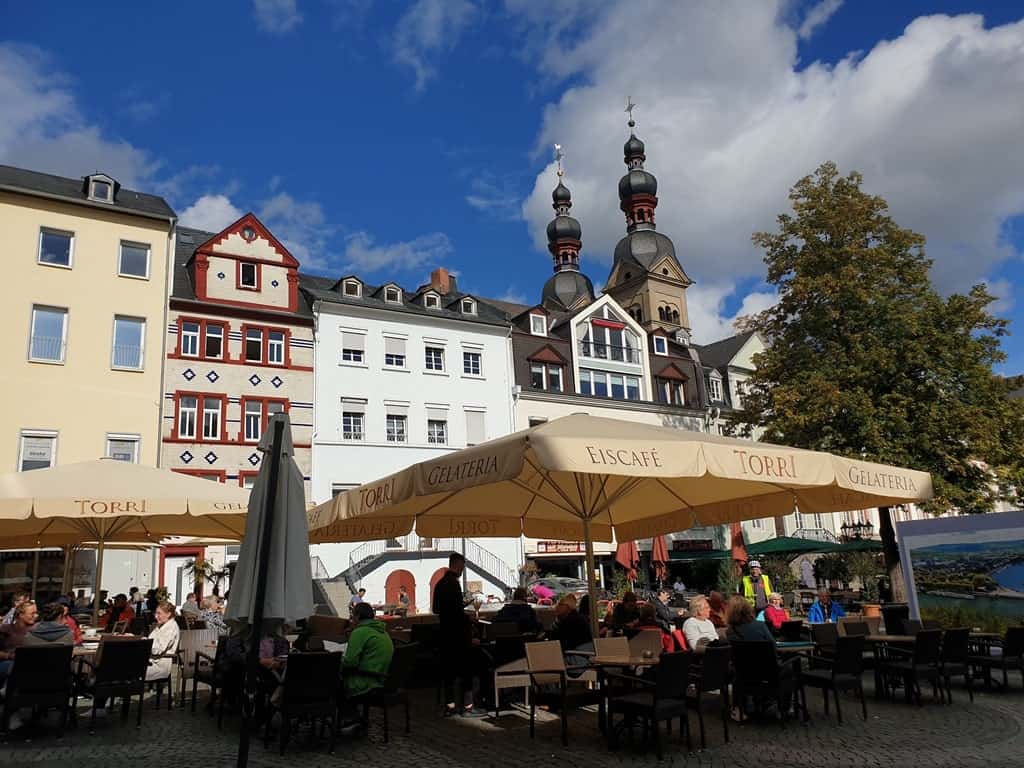
Table of Contents
When to visit Koblenz
The best time to visit Koblenz is summer, even if August might be rainy. If you’re up to attending a folk event, don’t miss the “Rhine in Flames,” taking place in mid-August! If you’re more interested in food and wine tastings, choose September to attend the local Wine Festival.
You can easily spend 3 or 4 days in Koblenz since it’s full of attractions and its surroundings deserve at least one day trip. If you’re short on time and you’re staying in Cologne or Mainz, save at least one day to visit Koblenz!
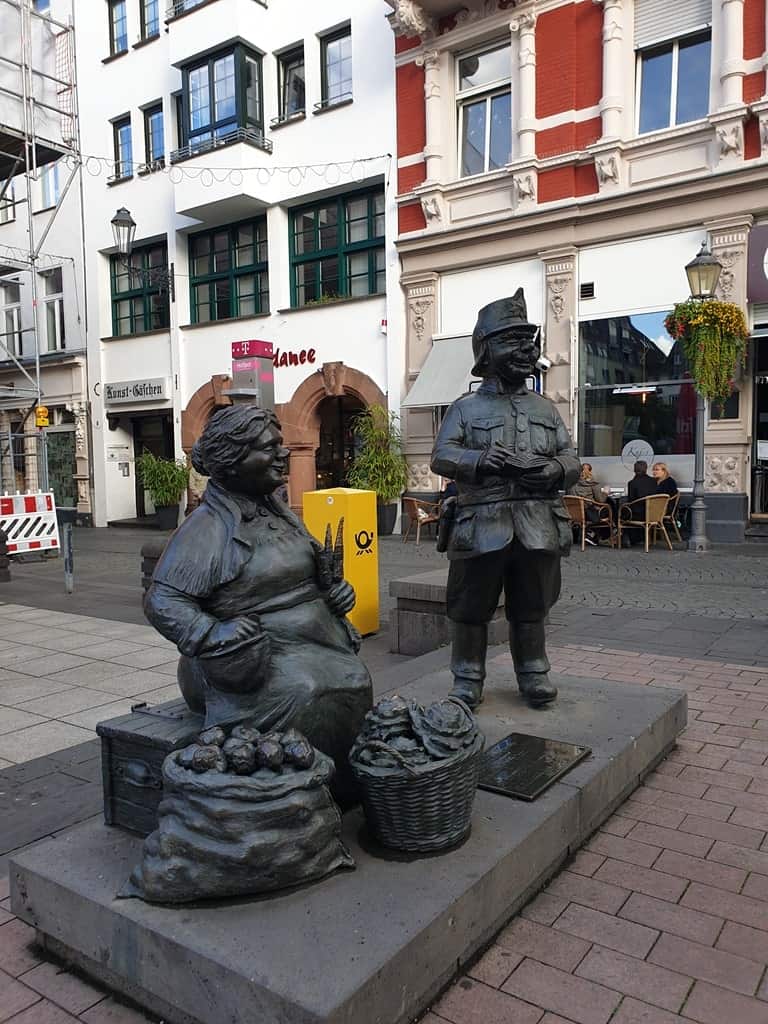
How to get to Koblenz
- By plane: if you’re flying to Germany, choose Cologne or Frankfurt as your base. From there, you can easily reach Koblenz either by train or by car.
- By train: Koblenz is well-connected to Frankfurt (1h35), Cologne (50 min), Trier (1h25), Mainz (50 min), and Wiesbaden (1h30).
- By car: 3 German motorways connect Koblenz to several major cities, so it’s really easy to get there by car! Nevertheless, parking is sometimes difficult due to many restricted areas in the city center.
- By boat: Koblenz is a fixed stop for any river cruise and an excellent base to explore the entire valley. KD Company offers many themed cruises too, and you can check their schedule and cost here.
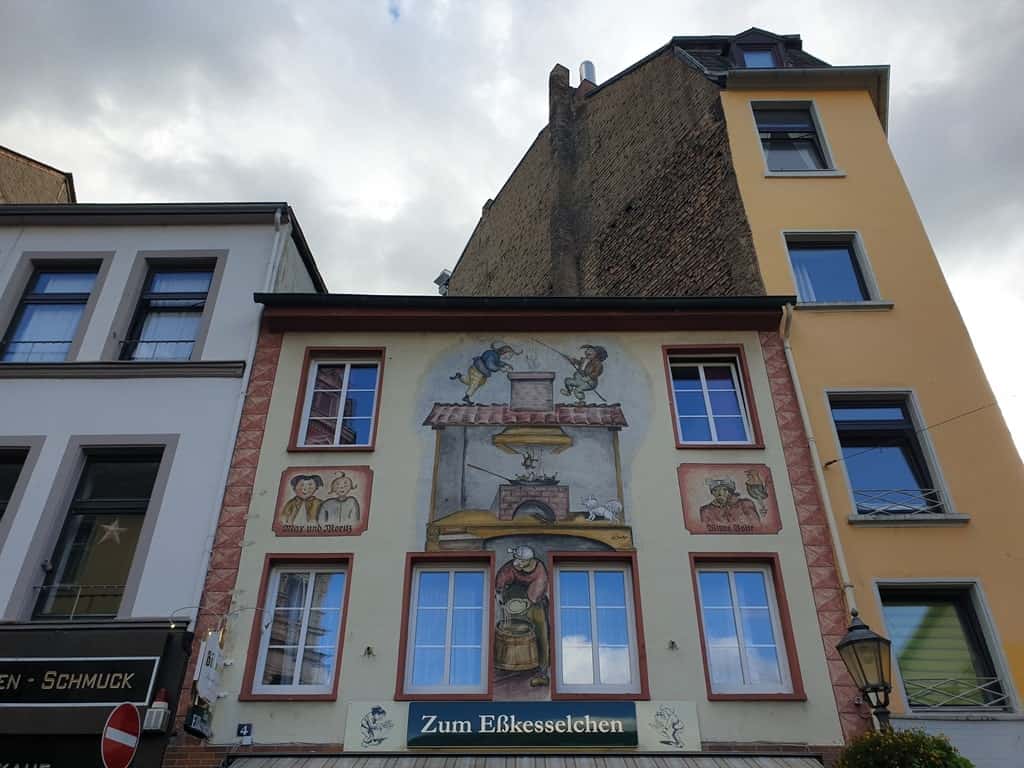
Where to stay in Koblenz
GHOTEL hotel & living Koblenz: its proximity to the railway station and its large parking lot make it an excellent choice for travelers. You can reach the heart of the old town in less than 10 minutes. Click here for more information and to check the latest prices.
Hotel Hohenstaufen: a modern and fully equipped non-smoking hotel in front of the railway station and within walking distance from the city center. Click here for more information and to check the latest prices.
Things to do in Koblenz
Take some pictures at the Deutsches Eck.
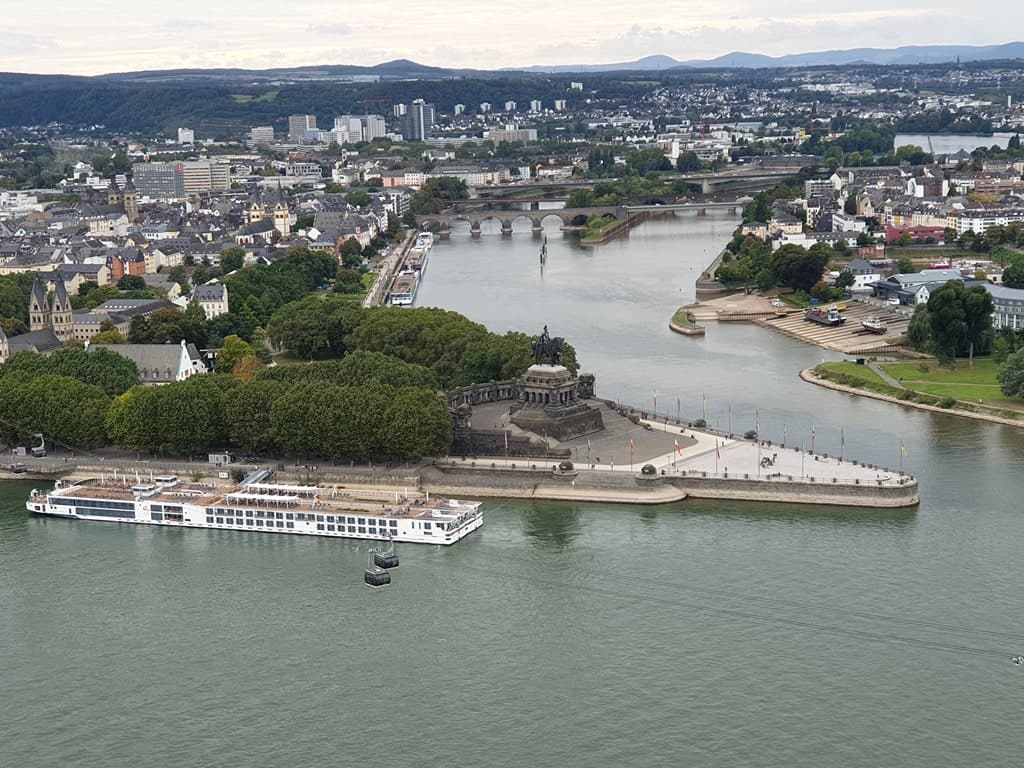
The main landmark of Koblenz is this iconic observation deck. Just stand there watching these two majestic rivers becoming one, and take some time to observe the impressive equestrian statue of Wilhelm I, which is 37m tall.
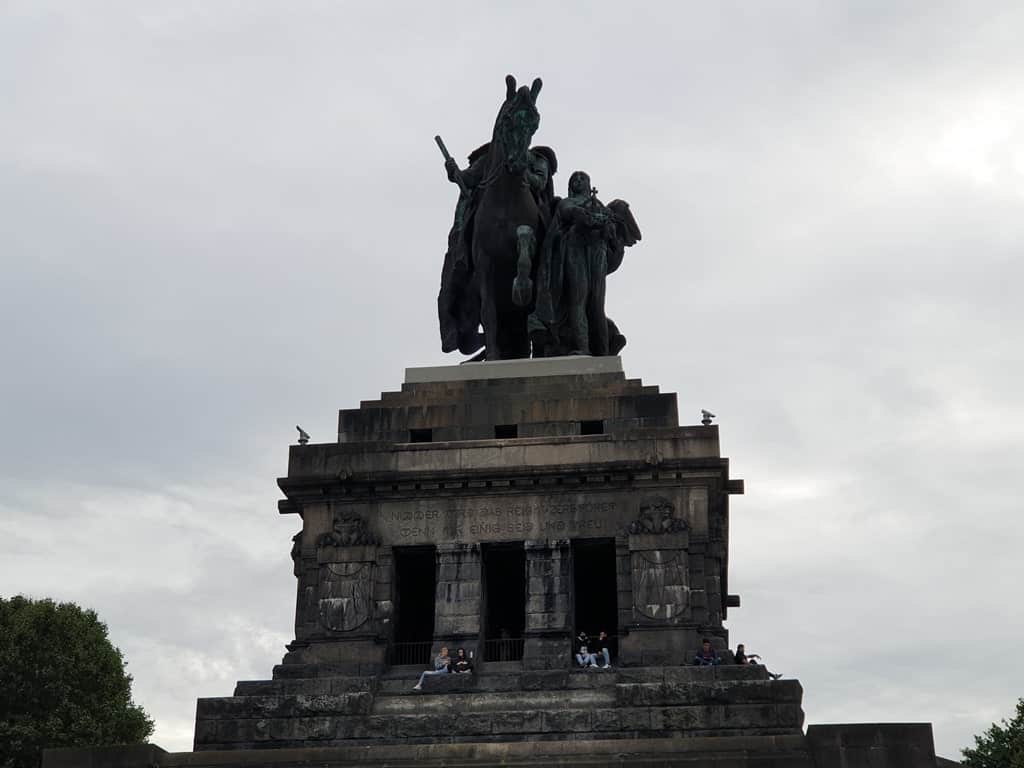
Enjoy a ride on the Koblenz cable car.
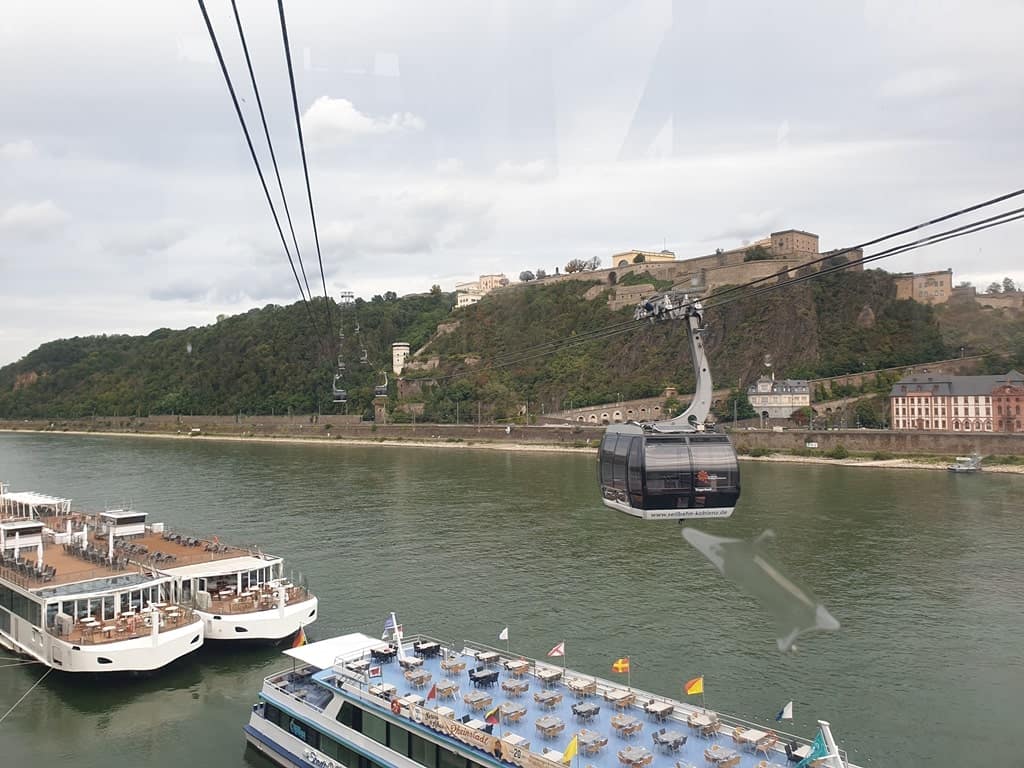
Another attraction you cannot miss is the cable car leading to the Ehrenbreitstein Fortress. It can carry 7500 passengers per hour, which makes it the cable car with the largest capacity in the world. It’s a great place to take pictures of the Rhine River below, especially at sunset. If you don’t suffer from vertigo, choose car number 17: its floor is made of glass! The cost of a one-way ticket is 10 euros for adults and 6 euros for kids.
Take in the view at the Ehrenbreitstein Fortress.
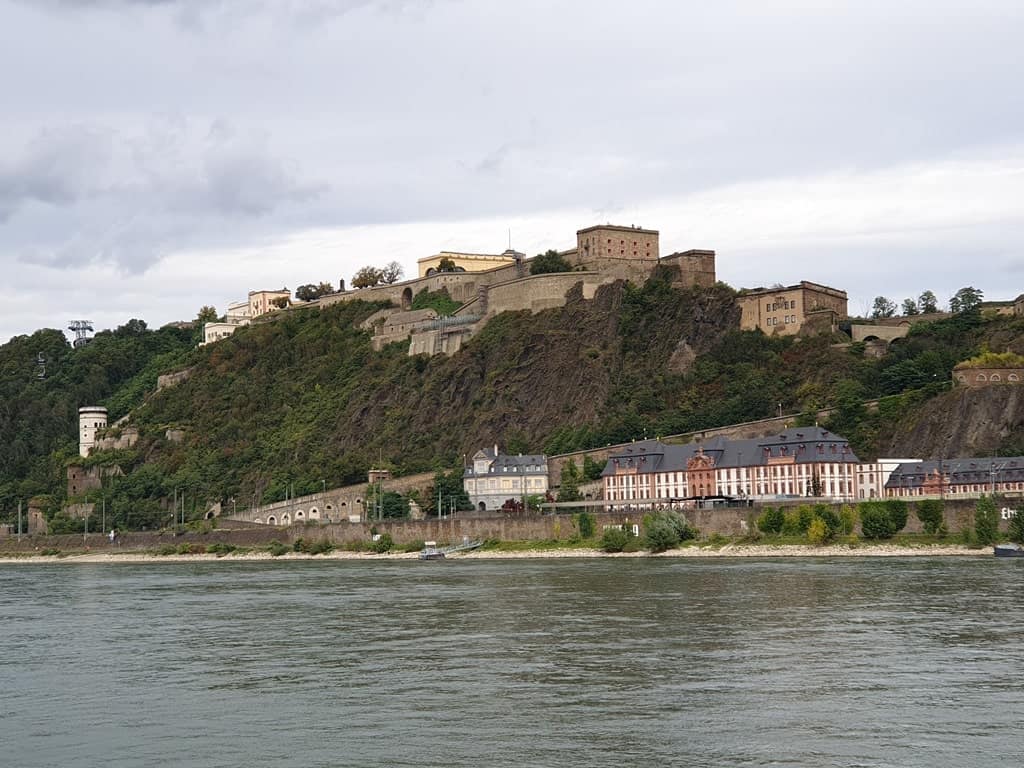
Once on top, you’ll have reached 118m above the river, and the view is definitely worth the detour! The Ehrenbreitstein Fortress, in its actual shape, dates back to the 19th century, but some sort of fortifications had been present on this rocky promontory since the Middle Ages.
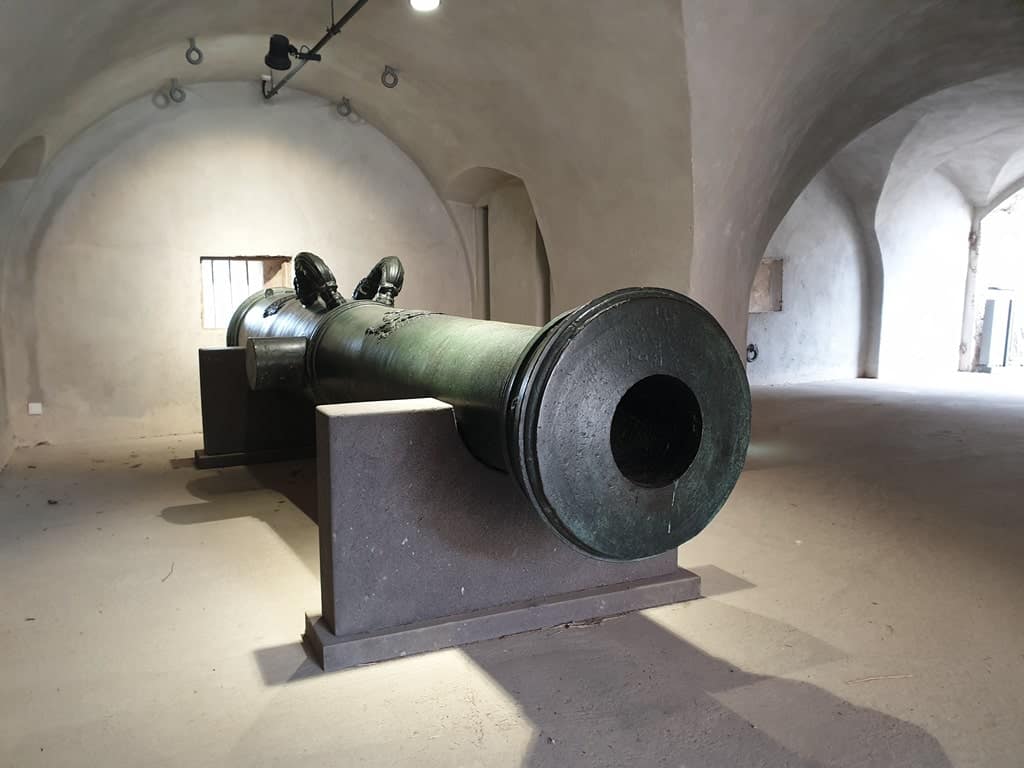
Inside, you can visit the Landesmuseum offering an insight into the fortress’ history and archeology.
Step back in time to the Stolzenfels Castle
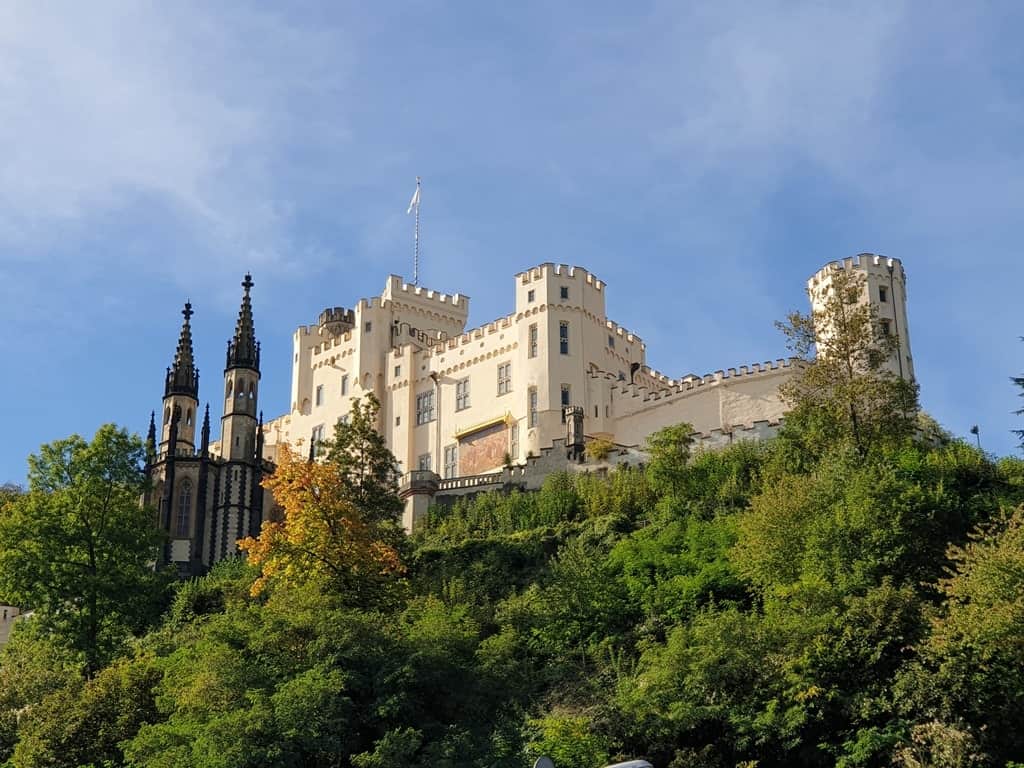
If you love visiting castles, save a few hours from reaching Stolzelfels, only 7 Km outside Koblenz (you can easily reach it by bus 650 in about 10 minutes). It dates back to the 19th century when it was built upon the remains of an older medieval fort by Prince Friedrich Wilhelm.
He assigned the project to a famous architect named Karl Friedrich Schinkel, who made a real masterpiece that’s still considered an icon of German Romanticism. The entrance is 5 euros for adults and 3 euros for kids. Don’t forget to visit its beautiful garden too! For more information, check here.
Visit Lahneck Castle
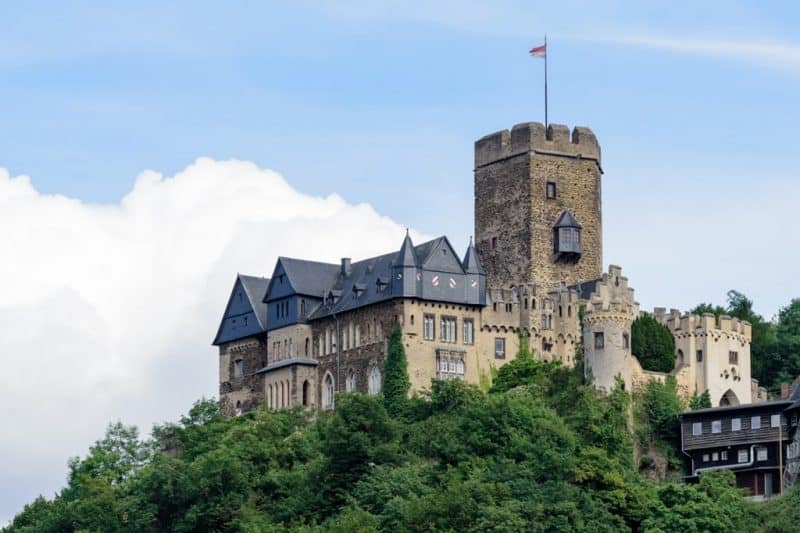
This castle was built in 1244 upon a hill overlooking the small town of Overlahnstein, at the confluence of the Lahn and the Rhine Rivers. It is now privately owned, but you can visit it with a guided tour from July to November. It’s easily reachable from Koblenz by train, and the journey only takes about 10 minutes.
Visit St. Castor Basilica
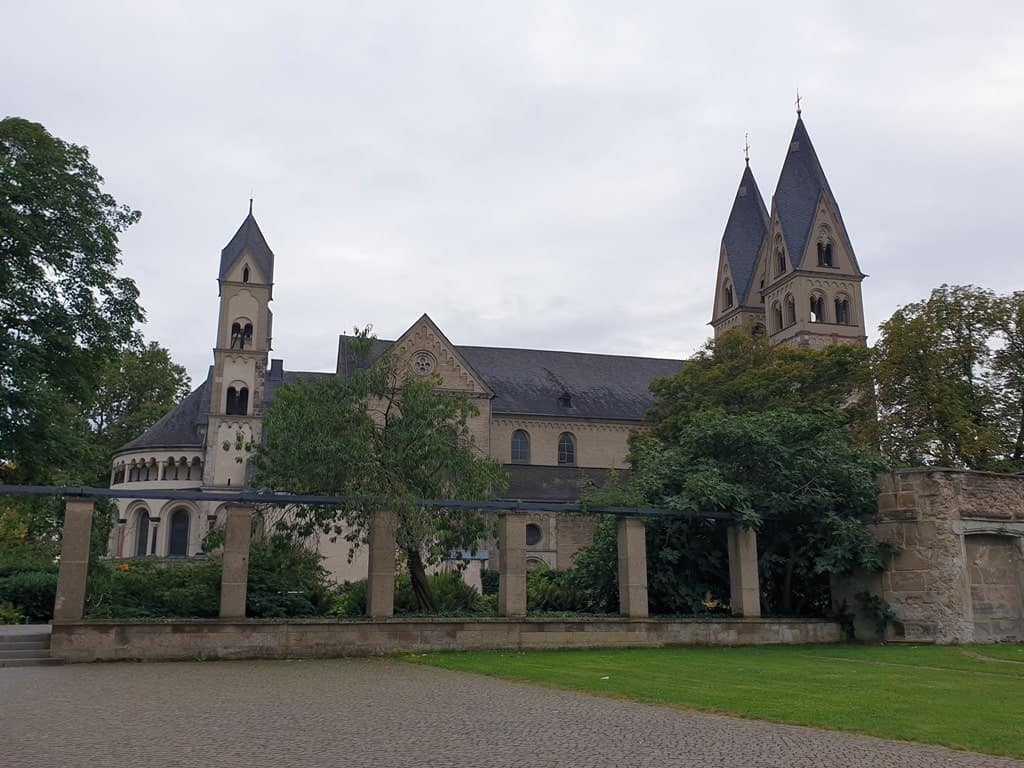
At the heart of the picturesque old town, you cannot miss this beautiful basilica boasting 1200 years of history. It was heavily damaged during WWII, but it was carefully restored, and it’s still one of the highlights of any visit to Koblenz. It also had a nice flowered courtyard, perfect for a break.
Enjoy an evening stroll in the old town.
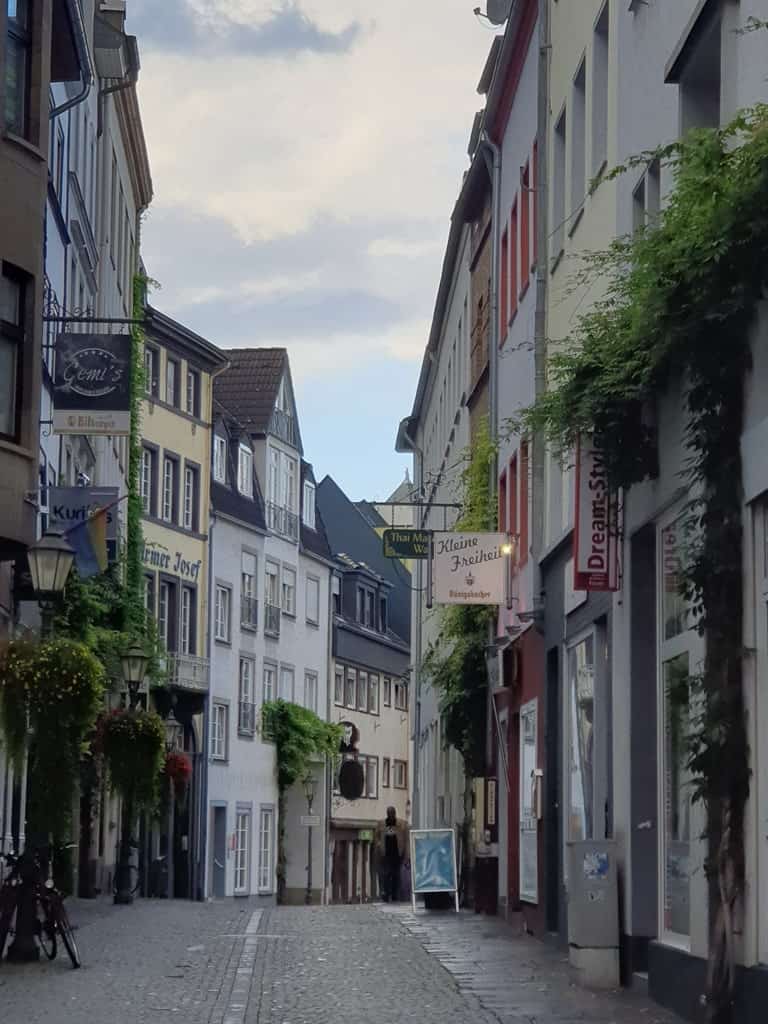
Its picturesque narrow alleyways, its cozy small squares, and its flowered gardens and courtyards make it a pleasant neighborhood to spend a night out. You can choose among a great variety of restaurants and cafés and enjoy the romantic lights giving the streets and the buildings a fairy atmosphere.
Take a picture of the Alte Burg.
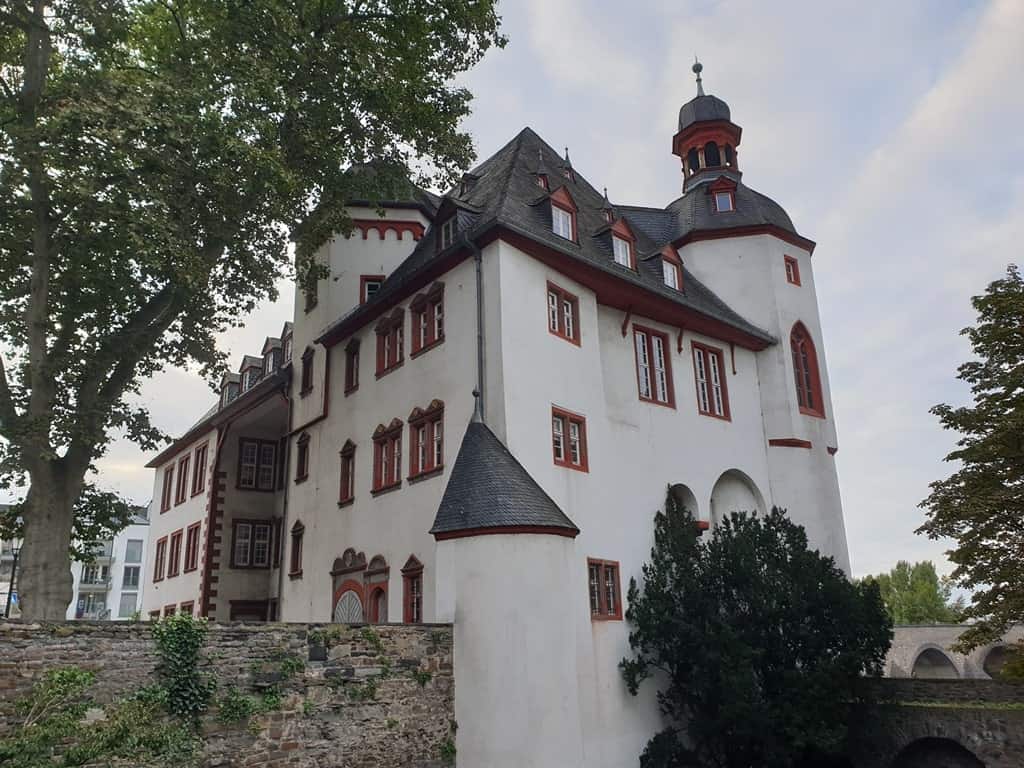
This ancient castle dating back to the 13th century was once surrounded by tall defensive walls and a real moat. It was built by Heinrich II von Finstingen, Elector of Trier, in order to prevent the uprising of the local pro-independence movement. It now houses the city archive.
Take a look at the History Column.
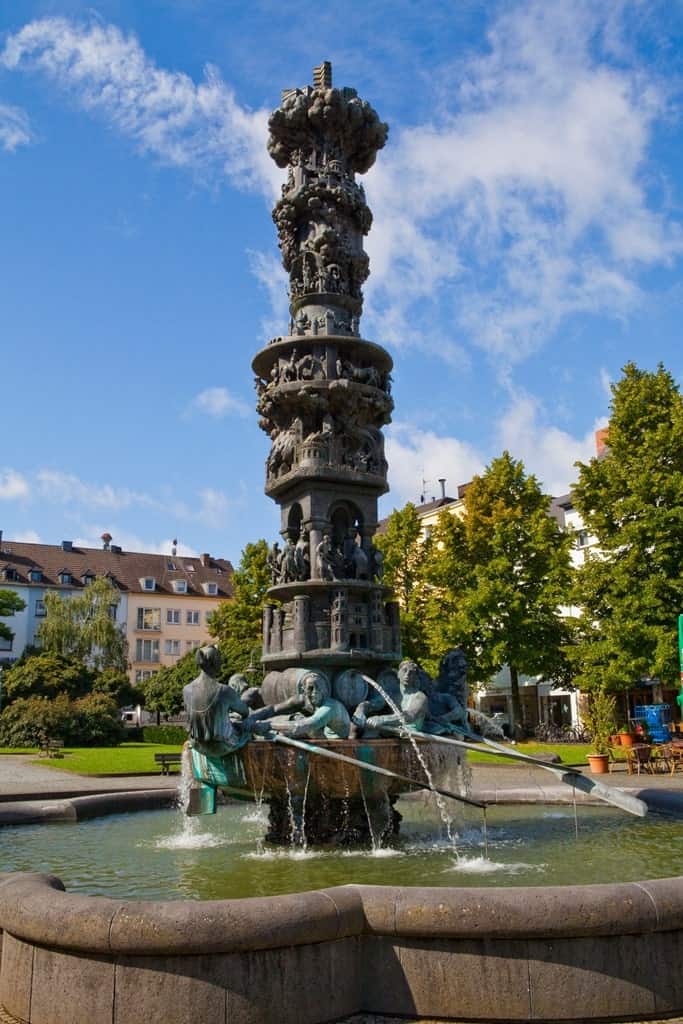
Stop in Josef-Görres-Platz to watch the Historiensaeule and its fountain. It represents the main historical events of the city, from the Roman era until modern times.
Feel like a king in the Electoral Palace
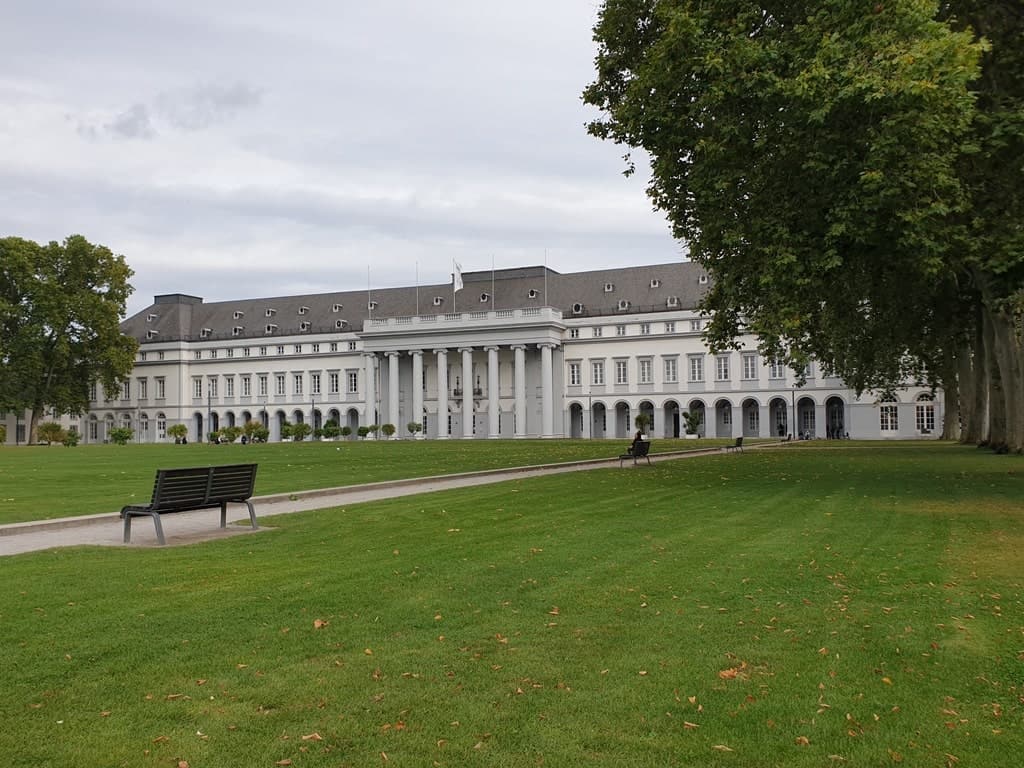
The Kurfürstliche Schloss is a royal residence by the river that was one of the last noble palaces built in Germany before the French Revolution. It now houses banquet facilities, the Grand Cafè, and some scenic terraced gardens you can visit for free.
Enjoy some contemporary art at the Deutschordenshaus
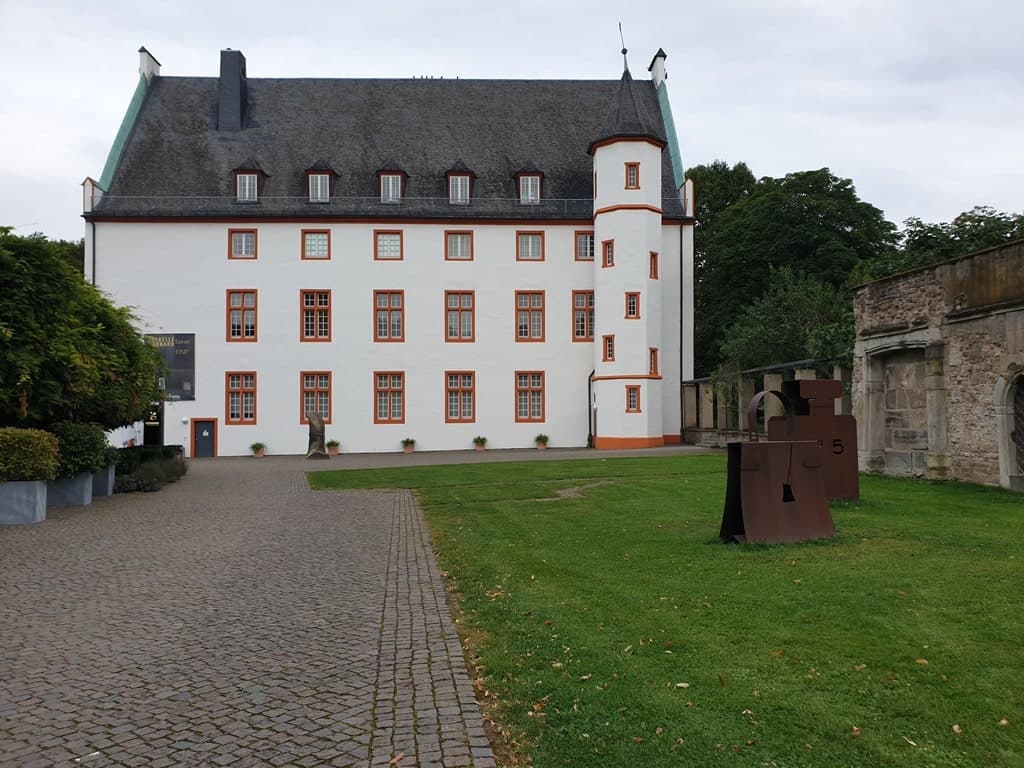
This old and picturesque building forms a stark contrast with what’s inside: the Ludwig Museum, which is a great exhibition of French and German modern and contemporary art!
Taste the best German gastronomic specialties at the Weindorf
Its name means “The Wine Village,” and it was set up in 1925 on the occasion of the Reichsausstellung Deutscher Wein (National German Wine Exhibition). Four buildings in a traditional style, reminding of the typical German winegrowers’ houses, were set up as exhibition centers where the most important national wine producers could showcase and sell their products.
Such an initiative was so successful that the village was kept in place even after the event! The original buildings were destroyed during WWII, but they were rebuilt in the 50s, and a miniature vineyard was also added. The village is now a famous gastronomic center. Click here for more information.
Enjoy a pleasant stroll along the Rheinanlagen.
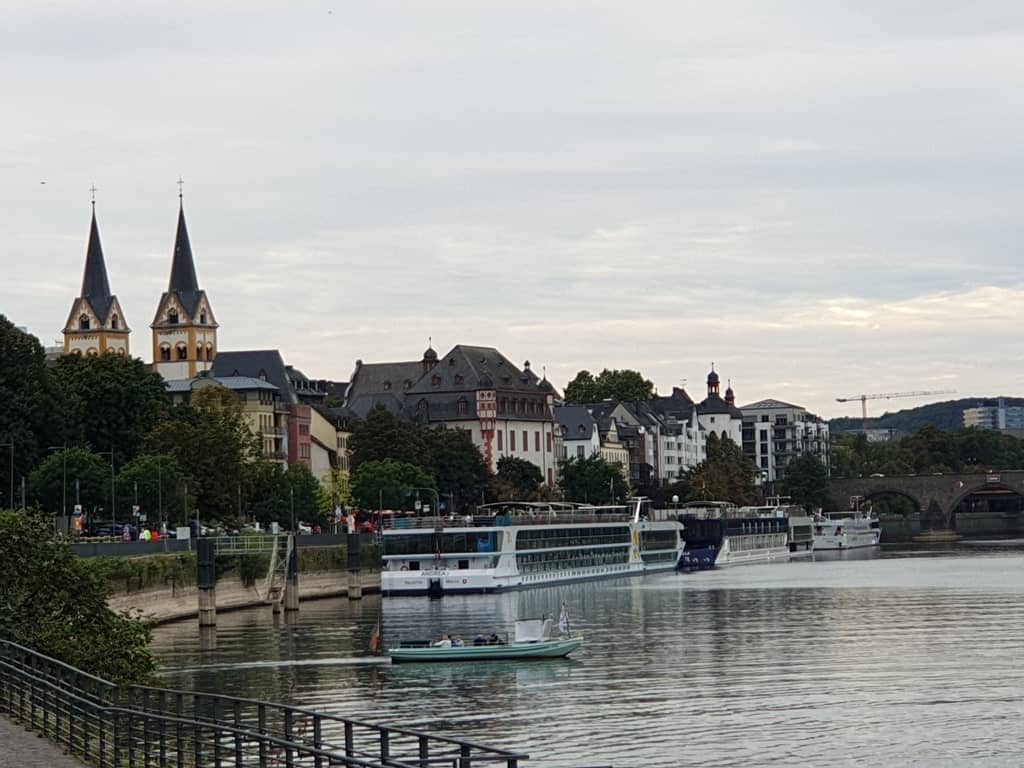
This park on the left bank of the Rhine River offers a nice promenade and an elegant environment. The 3,5 Km promenade was commissioned to a famous landscape architect named Peter- Joseph Lenné in the 19th century by the wife of Kaiser Wilhelm I. The park was partially redesigned and renovated in 2011 on the occasion of the German National Garden Show.
Learn more about German Romanticism at the Mittelrhein-Museum
This modern museum houses a rich collection of paintings and sketches that will help you learn more about what it’s often referred to as “Romantic Rhine.” It’s an unmissable stop for art and painting lovers!
Attend a show at the Koblenz Theatre
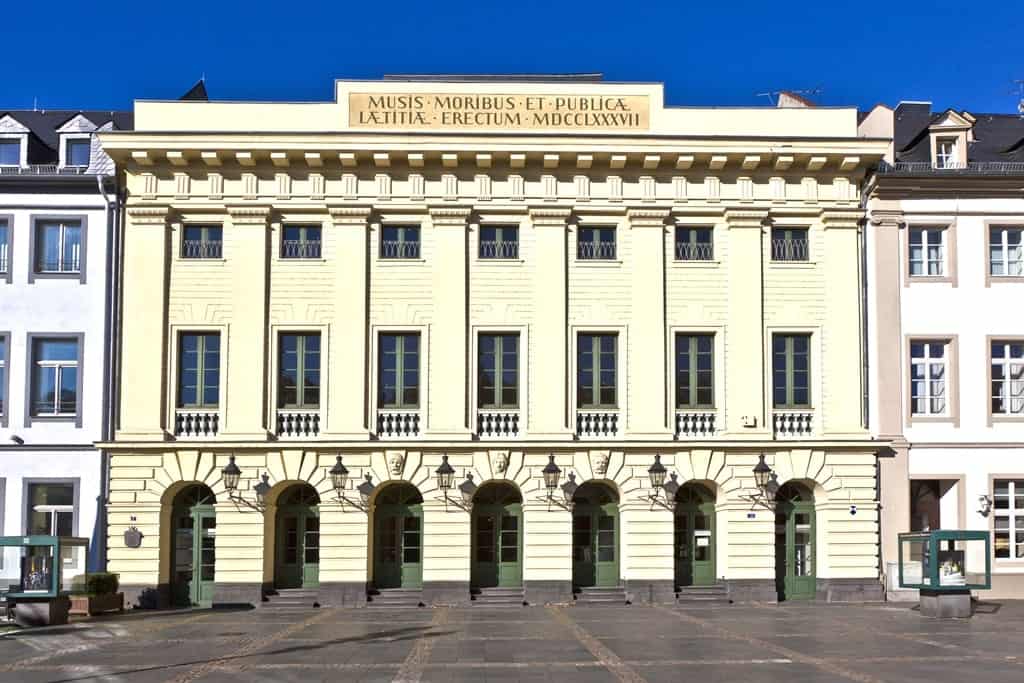
The only classicist theater in the Rhine River Valley is located in Koblenz, close to the Electoral Palace. It was built in 1787 as the private theater of the Archibishop of Trier and Elector Clemens Wenzelsaus.
Mind the splashes of the Schängelbrunnen fountain
One of the locals’ favorite landmarks is located in Willi-Hörter-Platz, and it’s surrounded by some beautiful Renaissance and Baroque buildings. It’s a fountain made by Carl Burger in 1940 and dedicated to the local poet Josef Cornelius who wrote the Schängellied, which is the anthem of Koblenz.
The funny guy on its top represents the playful spirit of local people, and it’s the symbol of the traditional Rhenish lifestyle. The kid really spits some water at erratic intervals!
Watch the Augenroller at the old Kauf- und Danzhaus
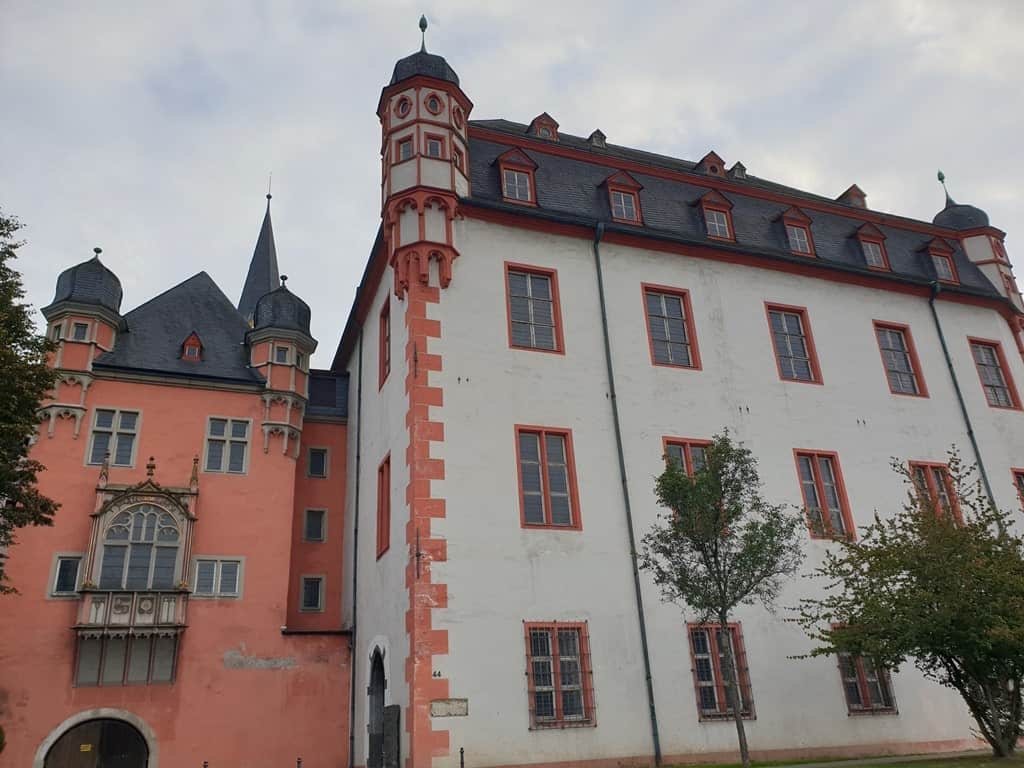
The so-called “Old Merchant and Dance House” is one of the main historical buildings of the old town. It was built in 1419 in the Gothic style, but it was renovated in the Baroque style towards the end of the 17th century. Below its clock, you can see the famous Augenroller: it’s a face whose eyes roll whenever the bell rings, and it even sticks its tongue out every 30 minutes!
Despite its funny look, it reminds of a dark episode: the capital execution of Baron John Lutter von Kobern, who was killed right there in 1536. Legend has it that he rolled his eyes and stuck his tongue to the crowd before being executed.
Take a look at the Dikasterialgebäude.
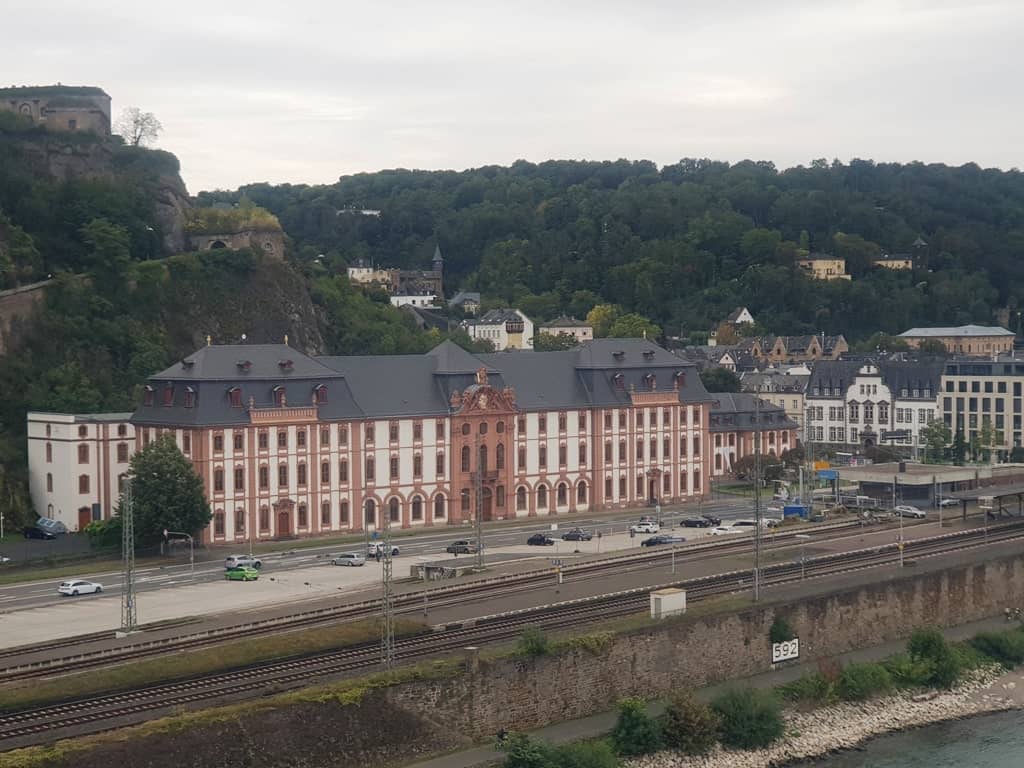
An elegant Baroque building looking like a castle dating back to the 18th century stands at the base of the Ehrenbreistein Fortress. It was the old electoral courthouse, and the Elector of Trier Franz Georg Schönborn established his administrative headquarters there. Over the years, it was also an accommodation for the soldiers and even a military hospital.
Have dinner at the Pegelhaus
It was built in 1609, and it was once a crane house by the river. It was then turned into a gauging station, and it’s now a popular restaurant offering a great view of the river. You can also have dinner under a glass dome allowing you to watch the sunset in the meantime!
Search for the so-called Vier Türme
The Four Towers belong to four ancient buildings at the corners of Am Plan, Lohrstrasse, Altengraben, and Marktstrasse, in the old town. They all date back to the 17th century, and they were built in the traditional style with elegant towers and typical bay windows.
Learn more about German military history at the VFF Wehrtechnische Studiensammlung Koblenz
It’s an unmissable stop for any fan of military history, with its four floors and 7200 square meters entirely dedicated to weapons, technical equipment, and uniforms belonging to the German army throughout the centuries.
Reach Fort Konstantin
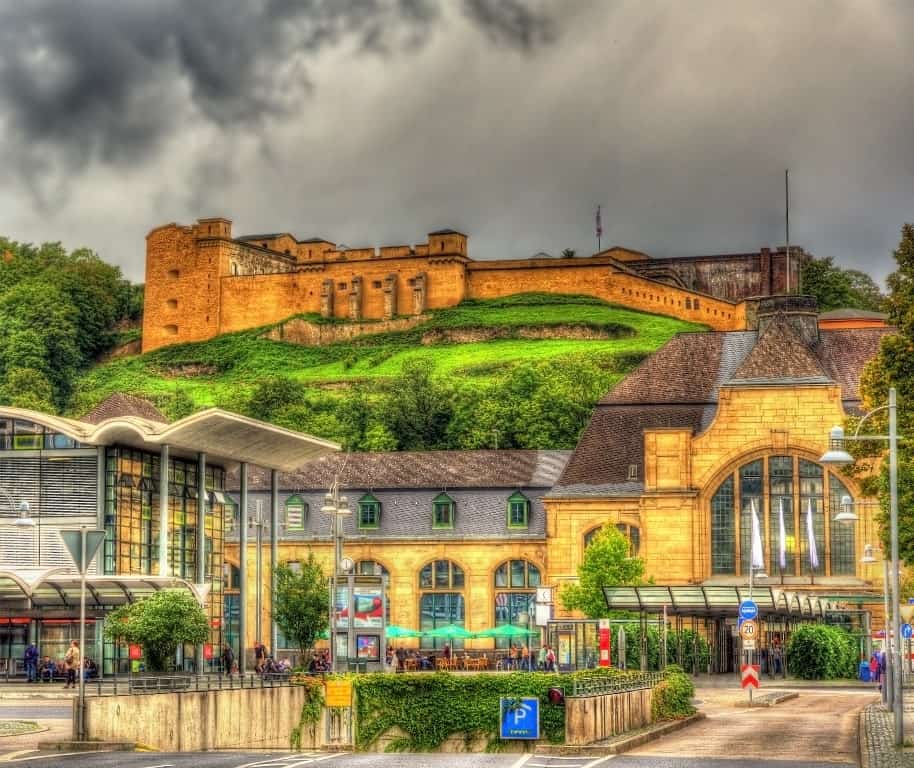
It’s located on top of the Beatusberg, overlooking Koblenz. It’s a perfectly preserved old fort built between 1822 and 1827 upon the ruins of an ancient monastery and bearing the name of the brother of Tzar Alexander I. It was a Russian outpost, and its underground rooms were used as a bunker during WWII. Inside, you can visit the Rhenish Carnival Museum, and you can even attend a concert or a show!
Enjoy a River Cruise
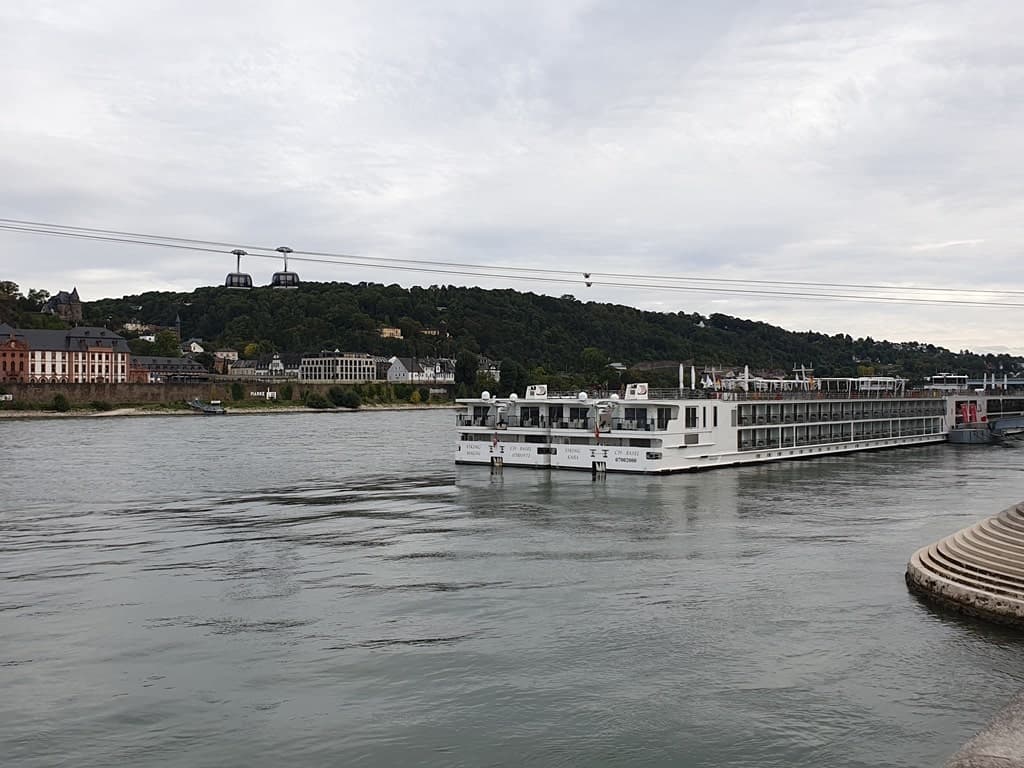
Seize the opportunity to explore the river banks and their castles, and don’t miss the chance to take a Mosel and Rhine River Cruise! Don’t miss one of the several KD Company’s themed cruises, and plan at least one day trip to visit one or more traditional and picturesque villages along the river banks.
